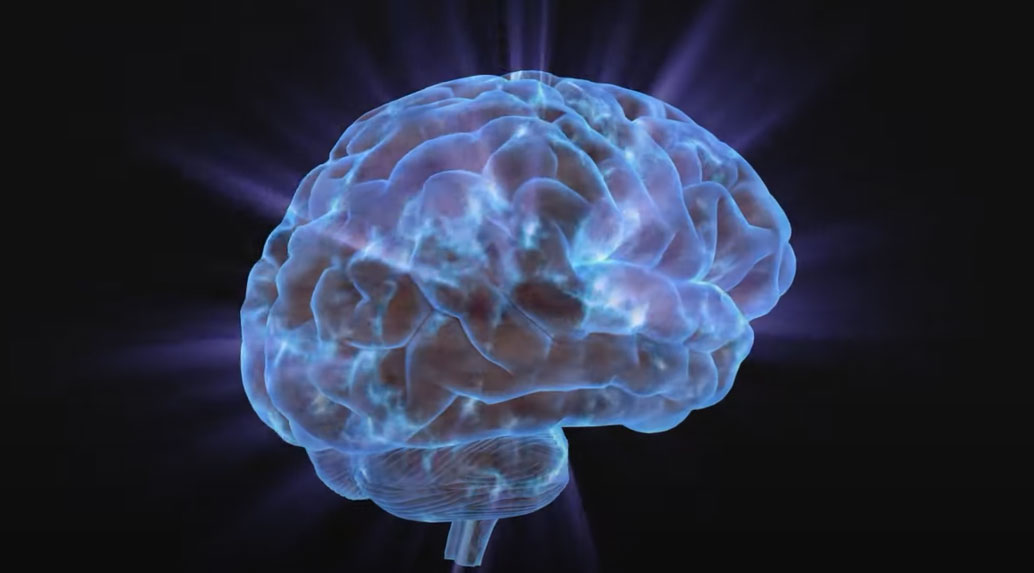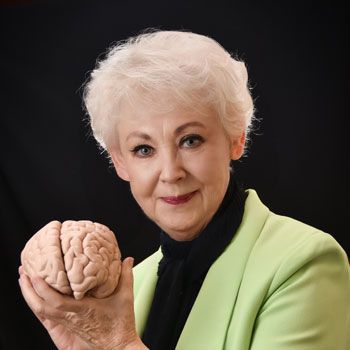Selected Definitions
Brain activity leads to changes on blood flow, electrical discharges, and magnetic fields.
—Richard Restake, MD in The Naked Brain
In the past, much of what was learned about the brain was discovered somewhat indirectly (e.g., through observation of behaviors, by studying the anatomy of a brain post-mortem, and through evaluating tests from blood and cerebral-spinal fluid). In the 21st century, testing modalities for brain-function  research are opening up the brain much as ocean-going ships once opened up the globe.
research are opening up the brain much as ocean-going ships once opened up the globe.
Brain imaging equipment is being refined and even developed almost on a daily basis. According to Dr. Restak, imaging techniques are either structural or functional. A CT scan or MRI captures an image of your brain's structure, while MRI, fMRI, PET, or SPECT scan depicts what your brain is doing over a specific period of time ranging from seconds to minutes.
Brain imaging techniques allow doctors and researchers to view activity or problems within the human brain, without invasive neurosurgery. There are a number of accepted, safe imaging techniques in use today in research facilities and hospitals throughout the world.
Following are examples.
CT (Computed tomography)
This type of scanning builds up a picture of the brain based on the differential absorption of X-rays. A CT scan can reveal the gross features of the brain but do not resolve its structure well.
DTI (Diffusion-Tensor Imaging
A variation of magnetic resonance imaging, DTI is able to measure the diffusion of water molecules through tissue. It was used on studies of 92 pairs of fraternal and identical twins. Researchers found a strong correlation between the integrity of the white matter (e.g., myelin that coats neuronal axons) and performance on a standard IQ test. A high quality of myelin, that seems to be inheritable, appears to correlate with higher IQ scores.
EEG (Electroencephalography)
Measures the electrical patterns, or brain waves, created by the rhythmic oscillations of neurons. The qEEG measures changes in brain waves.
EKG or ECG (Electrocardiography) — not to be confused with Echocardiogram, Electromyogram, Elecgroencephalogram, or Echocariogram.
This nonivasive testing modality captures the electrical activity of the heart over time by means of skin electrodes, and records this by an electrocardiographic device. The etymology of the word is derived from electro, related to electrical activity, cardio, Greek for heart, and graph, a Greek root meaning to write.
fMRI
Functional magnetic resonance imaging, or fMRI, is a technique for measuring brain activity. It works by detecting the changes in blood oxygenation and flow that occur in response to neural activity – when a brain area is more active it consumes more oxygen and to meet this increased demand blood flow increases to the active area. fMRI can be used to produce activation maps showing which parts of the brain are involved in a particular mental process.
FTIR (Fourier Transform Infrared) spectro-microtomography
This involves a non-destructive, full-color 3D imaging technique that provides molecular-level chemical information of unprecedented detail on biological and other specimens with no need to stain or alter the specimen.
MEG (magneto encephalography)
Similar to the EEG, MEG picks up signals from neuronal oscillation by honing in on the tiny magnetic pulse they give off rather than the electric field. It is faster than other scanning techniques and can chart changes in brain activity more accurately than either fMRI or PET Scans. Researchers can see how magnetic fields flux throughout the brain during thought processing, and how and where neurons work while the person does a specific task.
MRI (Magnetic Resonance Imaging) or NMR (Nuclear Magnetic Resonance Imaging)
Utilizes large circular magnets to align atomic particles in tissue and then bombard them with radio waves. A sophisticated computerized software system called Computerized Tomography converts the information into a three-dimensional picture of any part of the brain.
fMRI (Functional MRI)
Elaborates the MRI/NMR by adding to it the areas of the greatest brain activity (e.g., areas utilizing larger amounts of glucose and oxygen).
Nano-imaging
Uses nanoparticles, about 33 nanometers in diameter when wet, to safely cross the blood-brain barrier (an almost impenetrable barrier that protects the brain from infection) and enable a process known as brain tumor painting. This lights up tumors in the brain. It allows doctors to better pinpoint the location of the tumor, identify its boundaries, and possibly even use the nanoparticles to carry treatment medication.
NIRS (Near Infrared Spectroscopy)
An optical technique for measuring the amount of oxygen in the blood in the brain. Produces an image based on the amount of flues (e.g., glucose, oxygen) being utilized at any moment by each part of the brain. It can provide an indirect measure of brain activity.
PET (Positron Emission Tomography) Scans
Identifies the brain areas that are working hardest by measuring their fuel (glucose) intake. It requires an injection into the bloodstream of a radioactive marker.
ZTMS (Transcranial Magnetic Stimulation)
Uses a powerful magnetic field to stimulate or inhibit precise areas of the brain. May be helpful in working with patients who have been diagnosed with depression, obsessive-compulsive disorder and post-traumatic stress disorder.
SPECT (Single-photon emission computed tomography)
A nuclear medicine tomographic imaging technique, it is similar to conventional nuclear medicine planar imaging using gamma rays. It is able to provide true 3D information. This information is typically presented as cross-sectional slices through the patient, but can be freely reformatted or manipulated as required.
Tomography
Imaging by sections or sectioning, through the use of waves of energy, using a device called a tomograph. The image produced is a tomogram. A tomography of several sections of the body is known as a polytomography.
Techniques to study functions of normal brains include use of:
- A Tachistoscope, specifically designed glasses to present stimuli to a single visual field.
- Dichotic listening, headphones through which each ear hears a competing stimulus.
Miscellaneous assessments. Other assessments and testing modalities used to obtain information about the human body and senses, many of which impact brain function, include:
Body Temperature
- Medical thermometer
- Infrared thermometer
Circulatory System
- Blood tests for measure a variety of blood-related parameters
- Electrocardiograph records the electrical activity of the heart
- Glucose meter for obtaining the status of blood sugar
- Sphygmomanometer, a blood pressure meter used to determine blood pressure
- Ballistocardiograph or BCG – measures the recoil of the human body due to the momentum of the blood that is being pumped by the heart
Electromagnetic Energy
A variety of equipment types may be used to detect and measure electromagnetic energy, believed to leave neurons of the brain and heart at the speed of light, including:
- Magnetometers
- EEGs
- EKGs
- SQUID machines
- Oculargrams
- Multimeters
- Holograms
Hearing (loudness in phone)
- Headphone, loudspeaker, sound pressure gauged, for measuring an equal-loudness contour of a human ear.
- Sound level meter calibrated to a equal-loudness contour of the human auditory system behind the human ear.
Musculoskeletal System
- Ergometer– measures power / work of muscles
Nervous System
- Electroencephalograph - electrical activity of the brain
Respiratory system
- Spirometer – volume of air exchanged during inspiration and expiration.
- Capnograph- concentration or partial pressure of carbon dioxide in the respiratory gases.
- Pneumograph (or pneumatograph or spirograph – records the velocity and force of chest movements during respiration.
- Pulse oximeter – measures the oxygen saturation of a patient's blood indirectly (as opposed to measuring oxygen saturation directly through a blood sample) and changes in blood volume in the skin, producing a photoplethysmograph.
Sight
- Luminuos flux, photometry. A measure of the perceived power of light, luminous flux is adjusted to reflect the varying sensitivity of the human eye to differing wavelengths of light.
- Integrating sphere for measuring the total luminuos flux of a light source
- Illuminance, photometry
- Densitometer
- Light meter
- Lux meter
- Photometer
Smell




